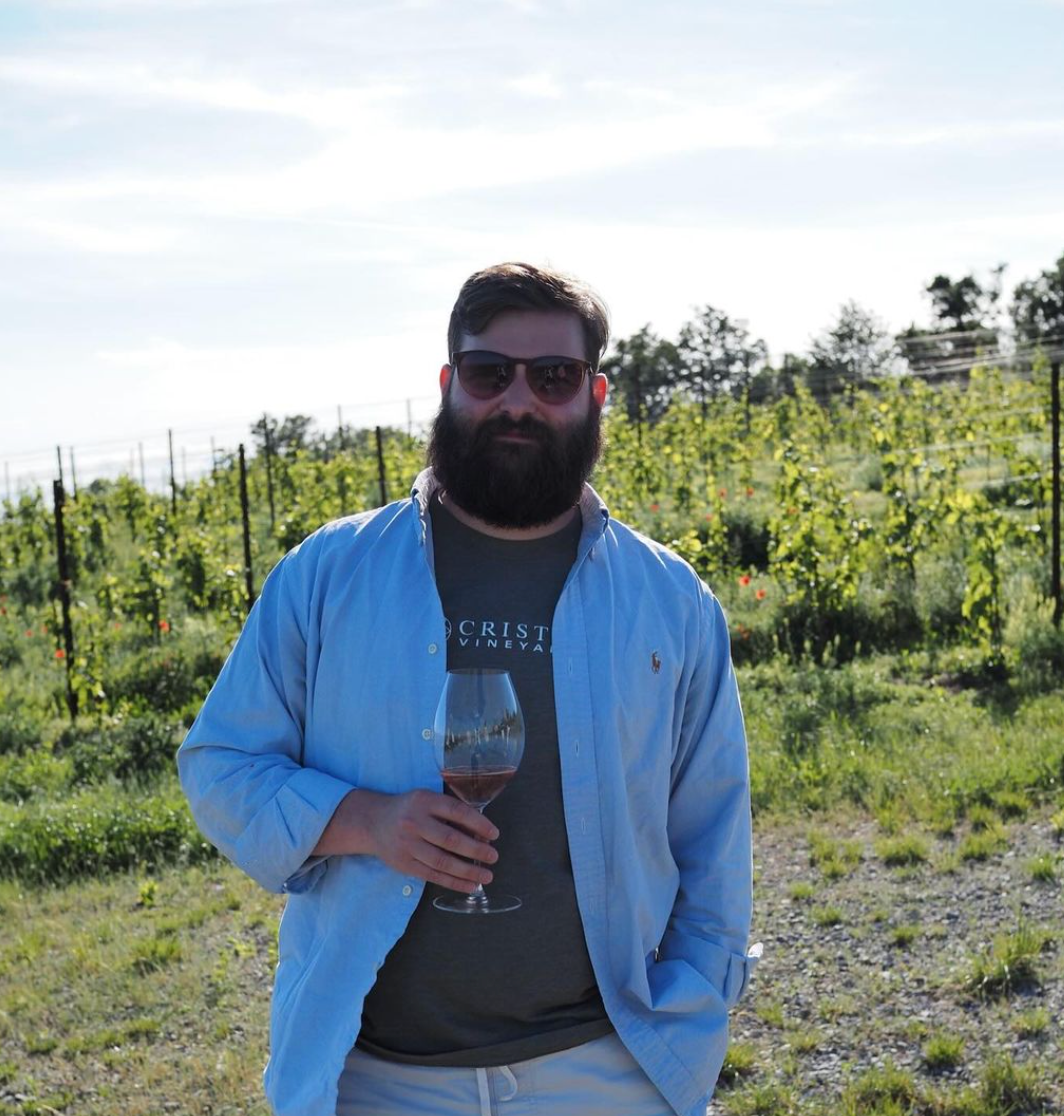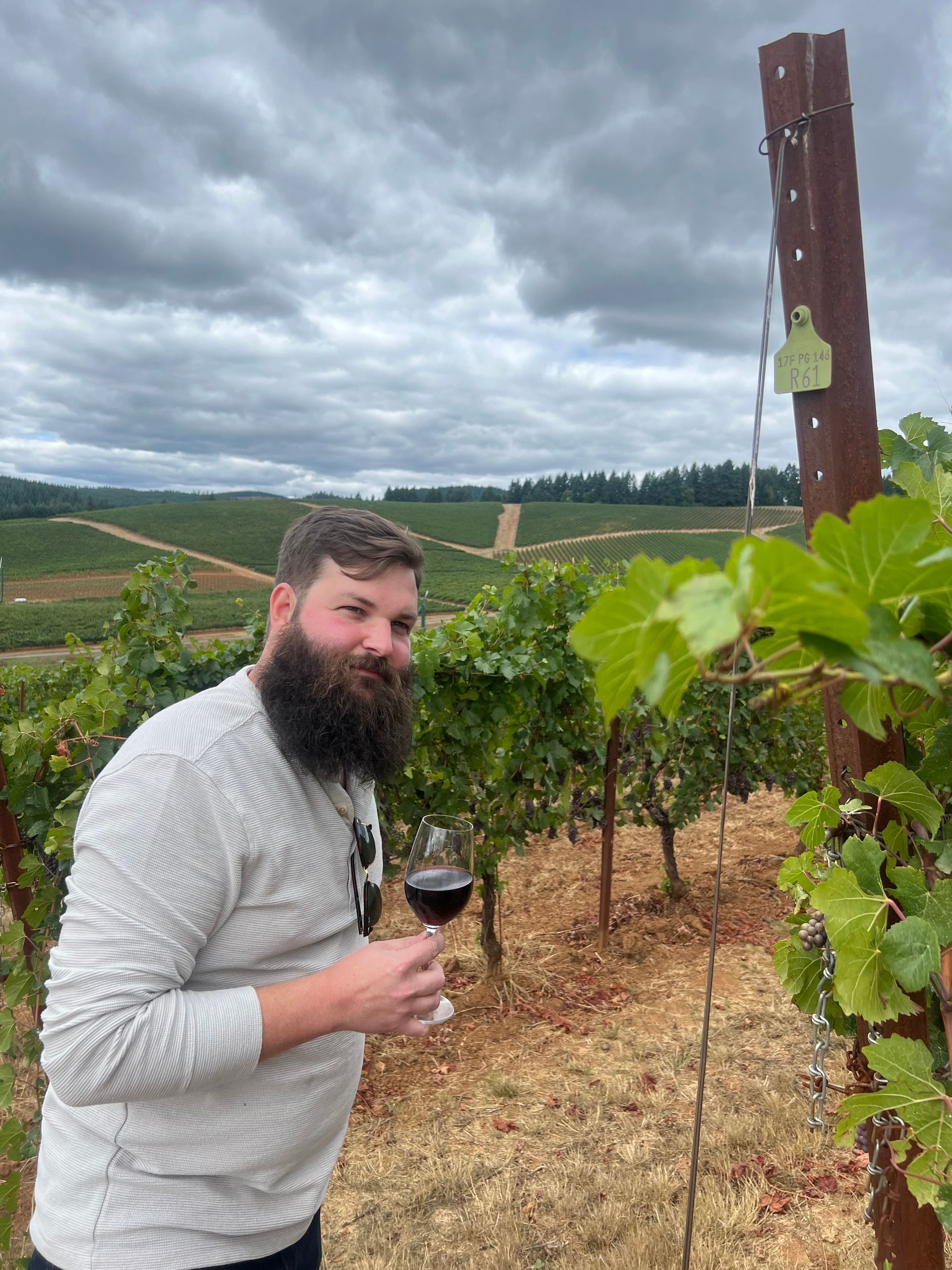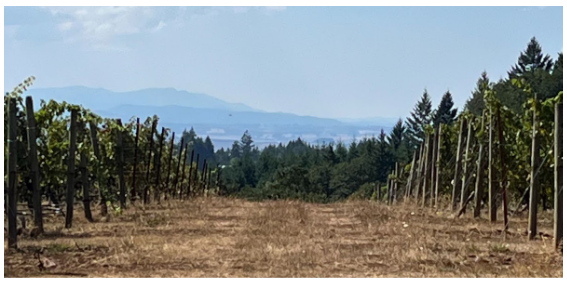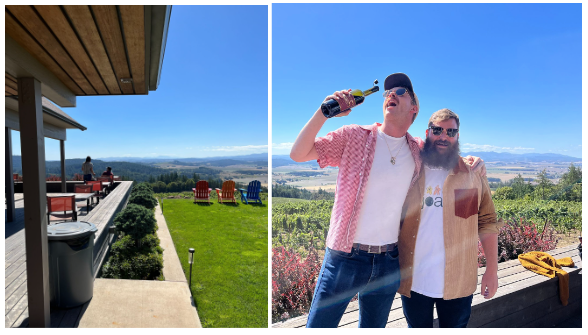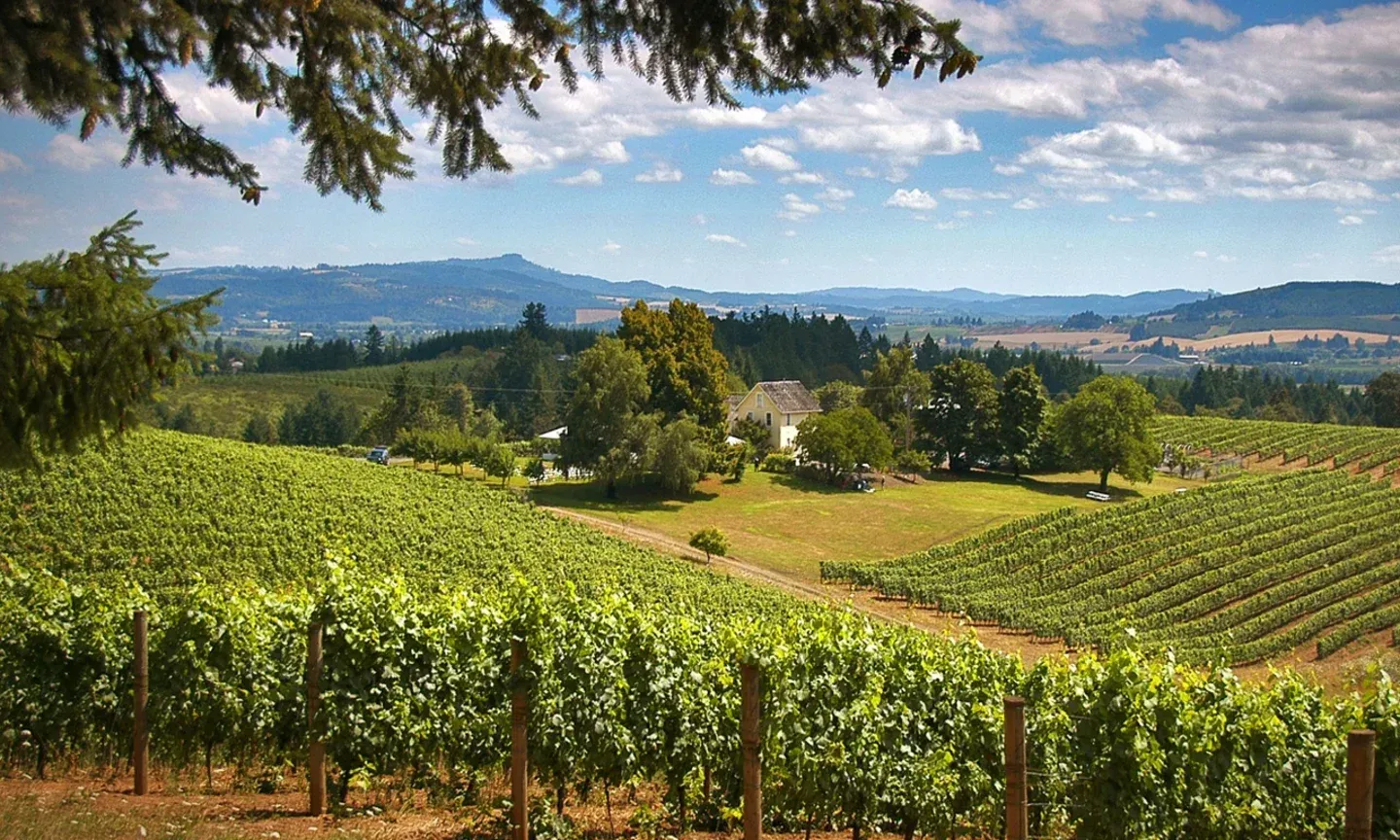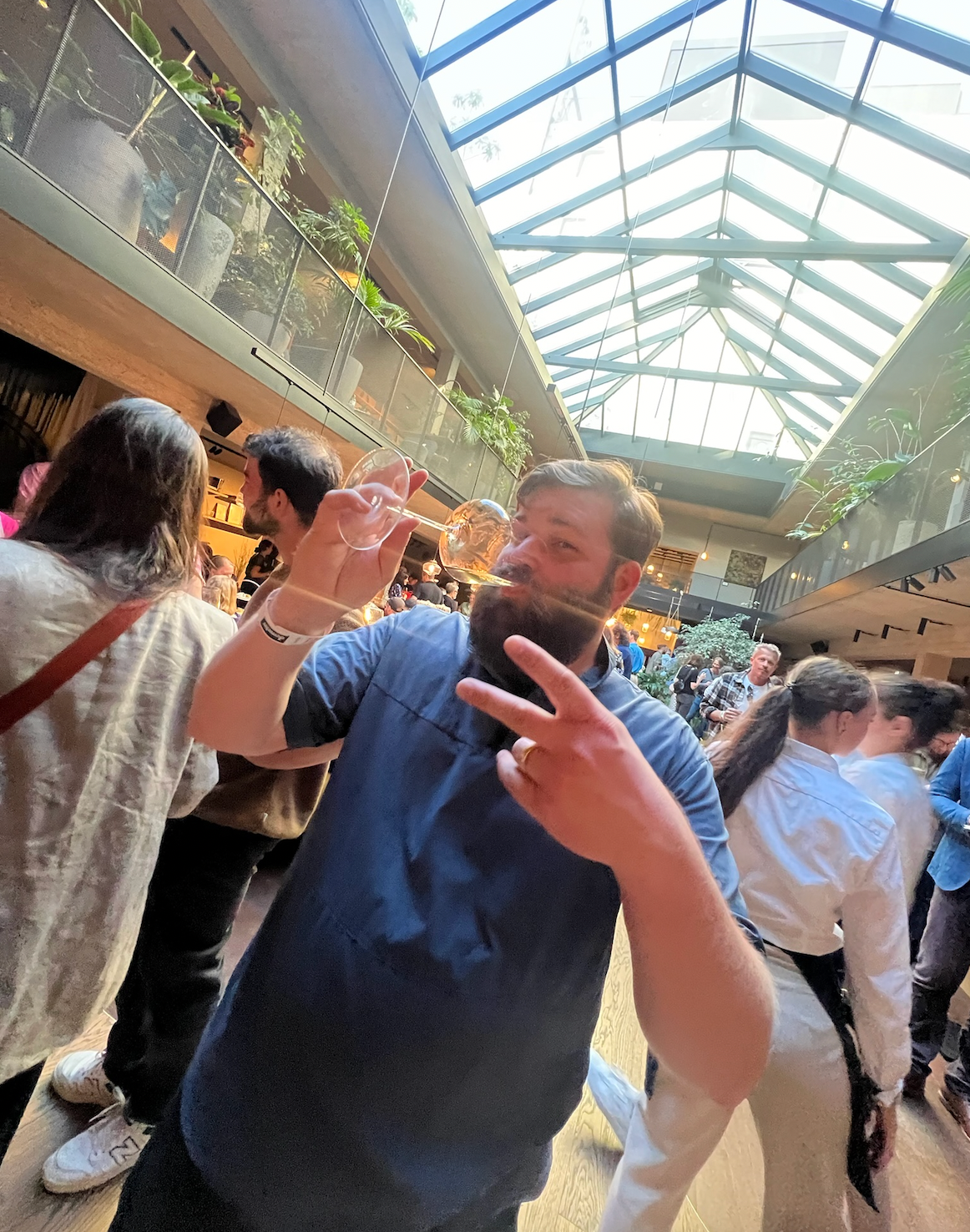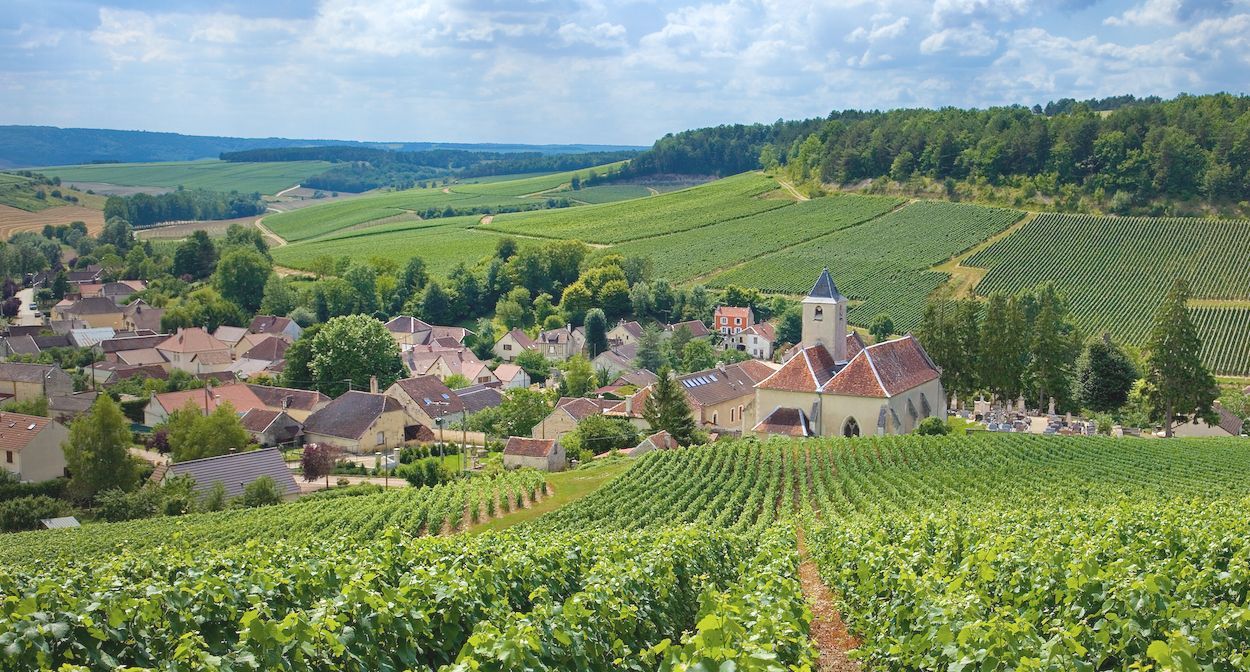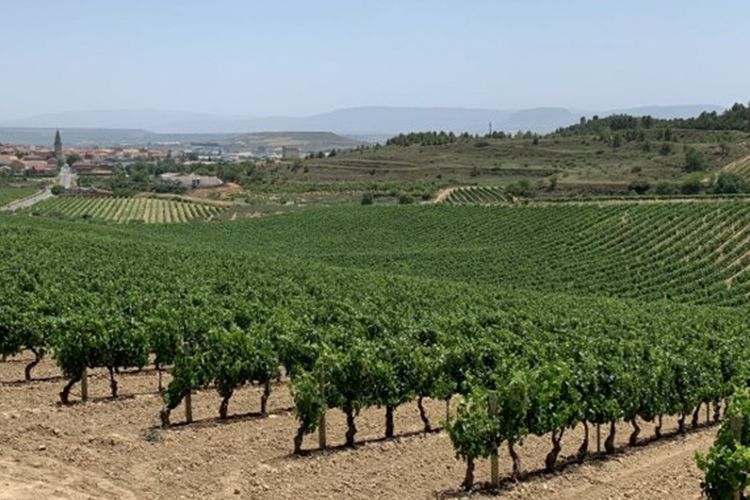Harvest
But first, harvest!
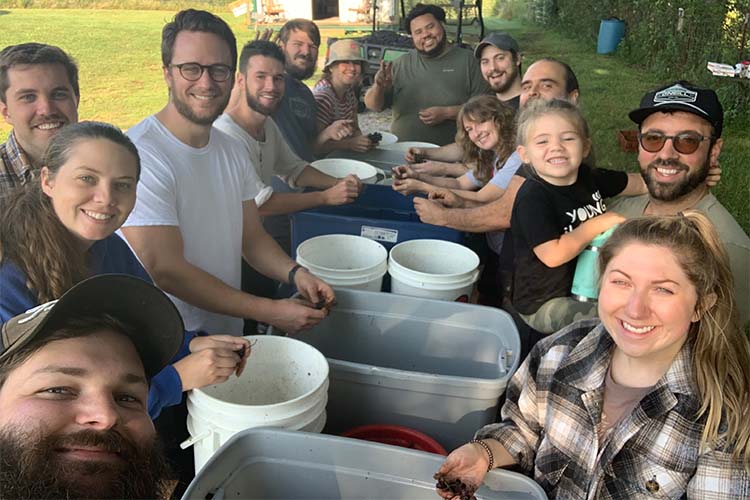
It's the best time of year! The leaves will begin to turn soon. A cool breeze, more often than not, is breaking through the thick summer air. Spooky season is upon us. But first, harvest! This month, vineyards across the northern hemisphere will pull the grapes from their vines to make wine. Last week was our harvest at Dudley Farm in Mt. Juliet, a century farm run by Homer Dudley that stretches 150 acres down Bender's Ferry. It is a beautiful place. In the Spring and Summer there is a roadside stand where you can buy fresh produce. During a typical year we will grow about a dozen varieties of peppers, another dozen varieties of tomatoes, garlic, onions, corn, squash, asparagus, strawberries, potatoes, cucumbers, and more!
I manage the small vineyard tucked in the southeast corner of the property. It is an acre of heaven on earth where we grow mostly Norton with a little bit of Chambourcin, two red native American hybrid varieties that you don't see too often on retail shelves. This month, along with the rest of the northern hemisphere, we harvested the grapes from the vines after a year of working to keep them safe and healthy. Here's what harvest looks like for us.
Harvest isn't a set date. We have to hang on to the edge of our seats listening to mother nature for just the right moment. Rain and temperature are two of the most impactful things that we have to deal with. For weeks leading up to the end of the season we measure the brix of the grapes. Brix is a measurement of sugar content in juice. Knowing the sugar content of the juice can help us figure out if the grapes are ripe enough to pick and also how much alcohol we can expect to have in the wine, as it's the sugar that is converted into alcohol by the yeast during fermentation. If temperatures are warmer and the vines get more sun light than not, ripening can happen at a faster pace, thus moving the harvest date up. Likewise, if we get slammed with a bunch of rain leading up to harvest the grapes can become swollen and waterlogged bringing the brix down and possibly pushing harvest back.
All of these things can be somewhat mediated by vineyard work like pruning and canopy management but you can only do so much to combat Mother Nature. Once the brix are around 24 and the weather forecast is promising, we jump on the opportunity. Luckily I have some incredible friends who come out to help harvest every year. Harvesting with friends is much of why it is my favorite day of the year. We meet at the farm at a bright and early 5:00 a.m. We want to arrive as early as possible to pick the grapes before the sun begins to bake them. When they are cut from the vines, they lose their life source and quickly begin to age. Wineries always want their grapes picked as quickly as possible at the coolest part of the day.
I always come with a load of Shipley's donuts and coffee (best in town). We eat and drink the hot coffee while we gather up our tools and wait for everyone to arrive. Once in the vineyard I test the brix and pH (acidity) again for good measure and record keeping. We first take down the nets that were put up months before to keep out birds and critters that like to snack on the fruit. Once the nets are down we pick. Bucket after bucket is loaded into the Gator and trucked over to our crush and destem station (a couple fold out tables under a tree). There are few things more satisfying to me than snipping the clusters off of the vines after having watched them grow all year. Standing around the vines with my best friends talking and goofing off while cutting grapes in the crispness of the morning is time I wouldn't trade for anything. It's beautiful too. Early in the morning a layer of fog sits right over the vines helping also to keep the grapes cold.
This year was extra special because we had our largest pull yet. Not only were the vines full of clusters, but the clusters were beautiful, full and free of any rot or insect intrusion. We have dozens of honey bee hives on the property so we keep the farm organic and free of insecticides or chemical sprays. This makes growing grapes a little tough when we get hit with so much fungus/mold/insect infestations in our humid southern climate. Sometimes we'll spray a little copper or sulfur but we lucked out this year by having an insect and funk free year. It was a miracle. The weather was close to perfect. I didn't spray once and didn't have to deal with any issues. It reminded me of the beauty of an ideal minimal intervention vineyard. Nature does all the work.
With about a dozen of us we can normally pick the entire vineyard in a few hours. After the grapes are picked we all gather around the tables and begin to destem the grapes. We try not to crush too much because we don't want the juice to have too much skin contact (Norton skins can contribute some off putting aromas). As we pick the grapes off the stems we pick through the must (the slurry of grapes, juice, seeds, some stems that will later be pressed) to pick out MOG (material other than grape) like spiders, so many spiders, leaves, bird poop, etc. We put the must in large containers and then transfer it back to my place where we grill burgers and press the juice off the must! This time around the table destemming is my favorite. This year, with such a large harvest, we stood around that table talking and destemming for close to 5 hours. The sun rises slowly behind us over the beautiful hills on the farm. The 150 year old barn (where I proposed to my wife) sits there at the bottom of the hill watching us. The cows start to come out, hawks fly over, the enormous trees, even older than the farm, give us shade. Like I said, heaven on earth. Homer, owner and master gardener at Dudley farm, stops by to give my friends a hard time for letting me suck them into waking up so early, ha. He gives us his thanks, which is crazy, because he deserves all the thanks for letting us run amok on his farm without supervision, ha. He's an amazing man and farmer who I was lucky to meet 10 years ago. I can honestly say he and his farm changed my life.
Back at my place we dump the must into a wooden basket press and turn the crank. Because of the short skin contact time we consider this a rosé of Norton. It's nice to sit out on the back porch, eat a burger, and press the wine while sitting out, tired from a long days work. We opened the last bottle of our 2019 vintage to celebrate. It was possibly the best bottle we had from it. A beautiful color and still amazing carbonation. Fingers crossed we can recreate it.
After pressing all the juice into glass carboys we moved them down to my basement and let them cold soak over night.The next morning I pitched the yeast and watched as fermentation began. The wine is still bubbling away in my basement. I am watching closely and plan to bottle the wine before fermentation is finished to trap some of those bubbles in the bottle to create a Pet-Nat. All the pressed grape skins will go in to buckets and go through a separate open top fermentation to give us a different style of wine, a darker still wine, but the sparkling rosé is our focus.
Harvest is all about a job well done. It's the culmination of a year's worth of work and more so, the grand finale of one of the most miraculous shows. There are few things I find more amazing than watching a vine go dormant, bud, bush out, grow vines 40 feet in length, then suddenly pop out fruit that we can eat and drink to sustain ourselves and enjoy, shed it leaves, and then repeat the cycle again. Incredible. I already can't wait 'til next year. Luckily we'll have a lot of wine to drink before then. Check out our new STAFF WINE PICKS!
The Wine Press
